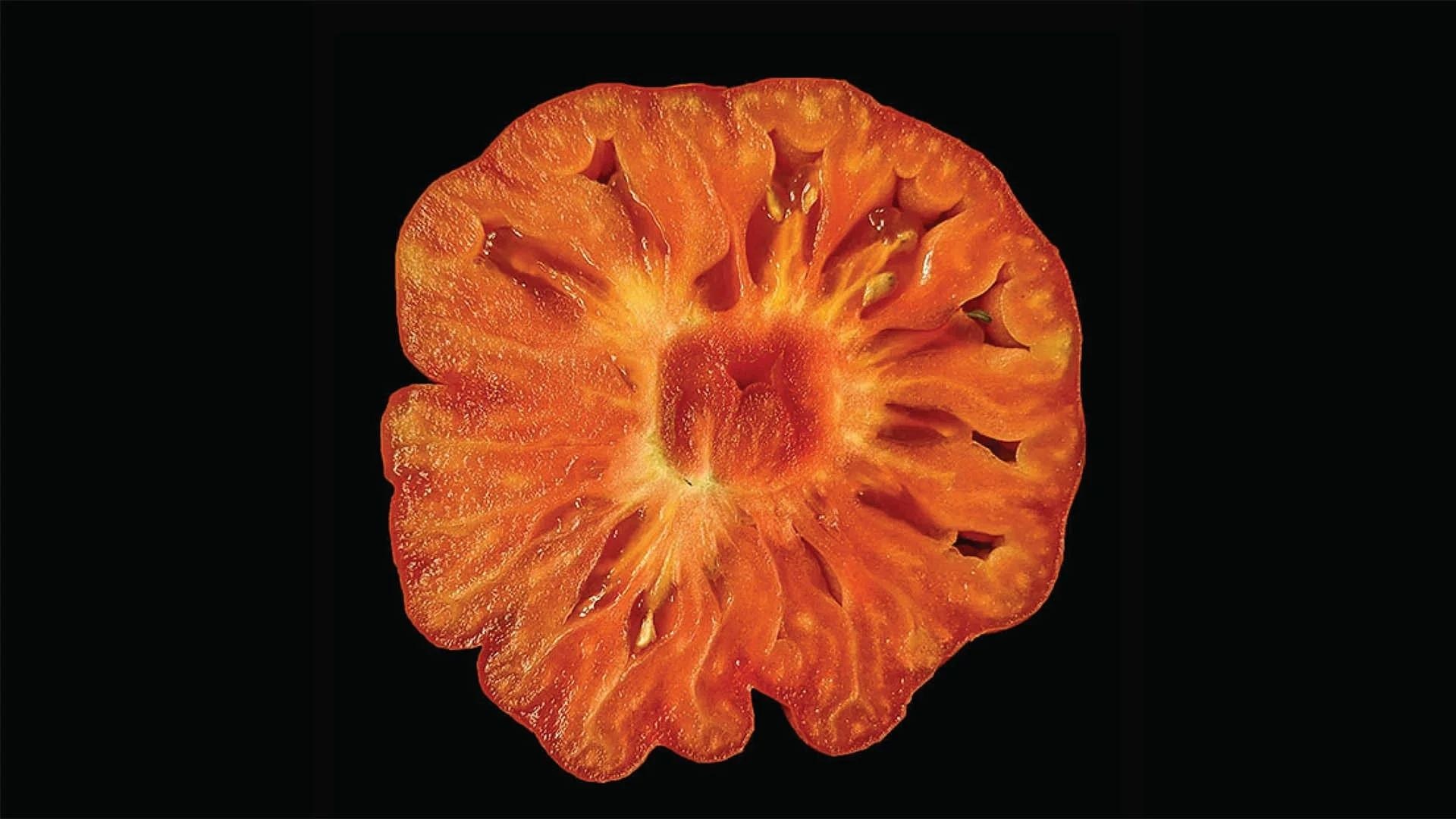More than a thousand years ago, tomatoes evolved through natural mutations. Now, researchers are able to create new crop mutations with improved traits using CRISPR genome editing.
 Cold Spring Harbor Laboratory scientists created a collection of over 40 tomato strains with natural and engineered mutations that affected fruit size. The strains were grown over several years and across several geographic locations, including Florida and Cold Spring Harbor, NY. Image Credit: Cold Spring Harbor Laboratory.
Cold Spring Harbor Laboratory scientists created a collection of over 40 tomato strains with natural and engineered mutations that affected fruit size. The strains were grown over several years and across several geographic locations, including Florida and Cold Spring Harbor, NY. Image Credit: Cold Spring Harbor Laboratory.
Single mutations, whether they occur naturally or are deliberately engineered, do not act in isolation. They function within a vast ocean of numerous so-called "background" mutations resulting from both evolutionary processes and agricultural practices. Consider the possibility that a lone background mutation could significantly impact the intended result of an engineered mutation.
In the realm of plant breeding, the interplay between natural and engineered mutations can yield surprising results, unveiling the intricate dance of genetic predictability. Cold Spring Harbor Laboratory (CSHL) recently embarked on a pioneering investigation to unravel the role of background mutations in shaping the outcome of genetic modifications.
CSHL's Professor and HHMI Investigator, Zachary Lippman, in collaboration with Associate Professor David McCandlish, posed a compelling question: Could diverse mutations, whether naturally occurring or precisely engineered, lead to similar effects on tomato size? The answer, it appears, depends on the presence of two other gene mutations. Employing CRISPR technology, they orchestrated an orchestra of mutations within the SlCLV3 gene—a natural mutation known to enhance fruit size. These genetic manipulations were then intricately intertwined with other genes that interface with SlCLV3.
The outcome of this groundbreaking study materialized in the form of 46 distinct tomato strains, each bearing a unique combination of mutations. What emerged was a revelation of predictability. The SlCLV3 mutations demonstrated a greater degree of predictability when interacting with specific other mutations. In one case, mutations in a particular gene led to consistent alterations in tomato size, while in another instance, the outcome remained shrouded in randomness. Astonishingly, the most advantageous effects were traced back to two ancient mutations that played a central role in the domestication of the tomato.
McCandlish and Lippman's research not only contributes to an enhanced understanding of genetic predictability but also underscores the paramount importance of context when introducing new mutations into crop genomes.
Is genome editing a way to quickly bring in consumer benefits better flavor, nutrition? The answer is probably yes. The question is how predictable is it going to be.”
Zachary Lippman, Professor, Cold Spring Harbor Laboratory
Lippman and McCandlish’s work suggests the role of background mutations demands reassessment.
The field will have to grapple with this as we start to make more highly engineered organisms. Once you start making 10, 20 mutations, the probability of having unanticipated results may increase.”
David McCandlish, Associate Professor, Cold Spring Harbor Laboratory
This research holds the potential to revolutionize precision agriculture, offering deeper insights into the intricate orchestration of genetic factors. As the agriculture industry strives to meet the changing demands of consumers and the global market, a comprehensive understanding of genetic predictability will be instrumental in harnessing the power of precision breeding to optimize crop production and deliver higher quality and more nutritious food to the world.
In a world where the intersection of science and agriculture becomes increasingly vital, the work of Lippman and McCandlish serves as a beacon, guiding us toward a future where genetic predictability takes center stage in crop improvement.
Source:
Journal reference:
Aguirre, L., et al. (2023). Idiosyncratic and dose-dependent epistasis drives variation in tomato fruit size. Science. doi.org/10.1126/science.adi5222